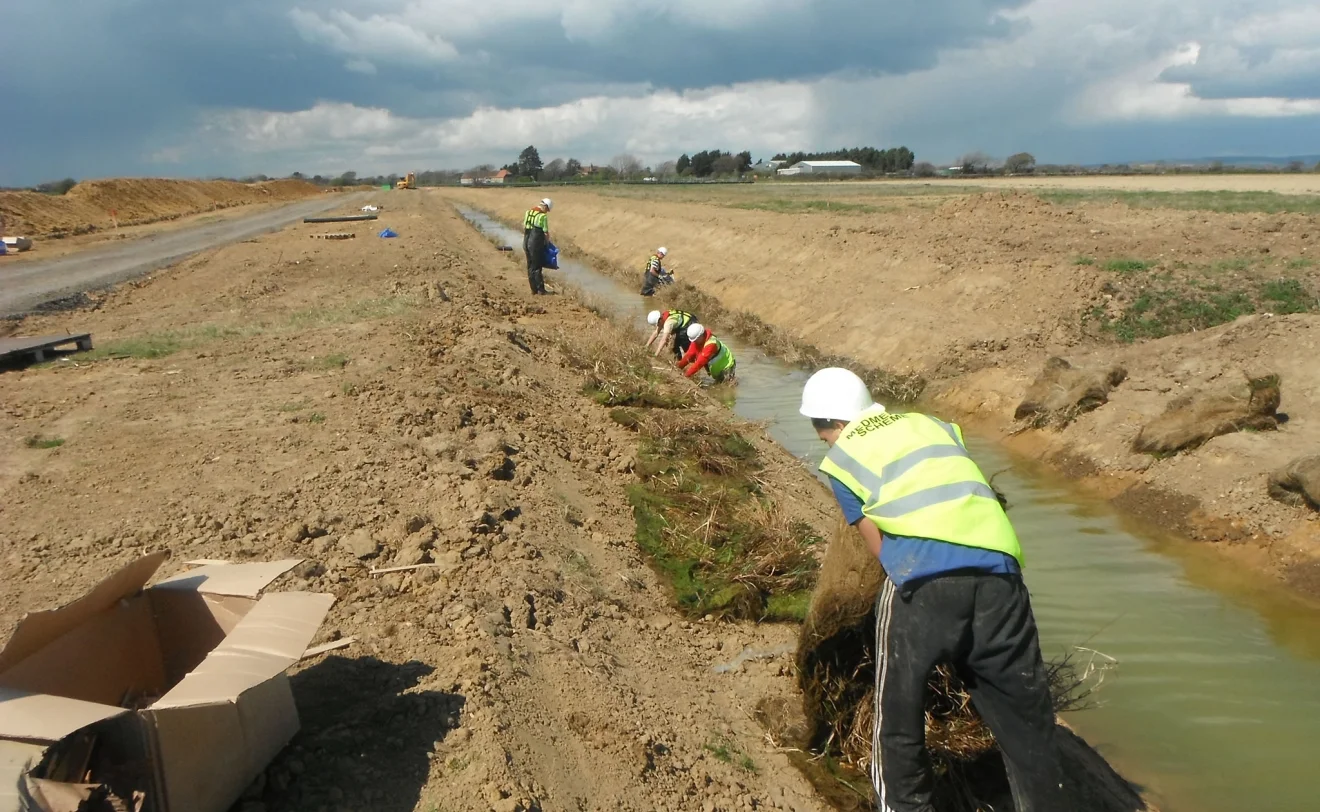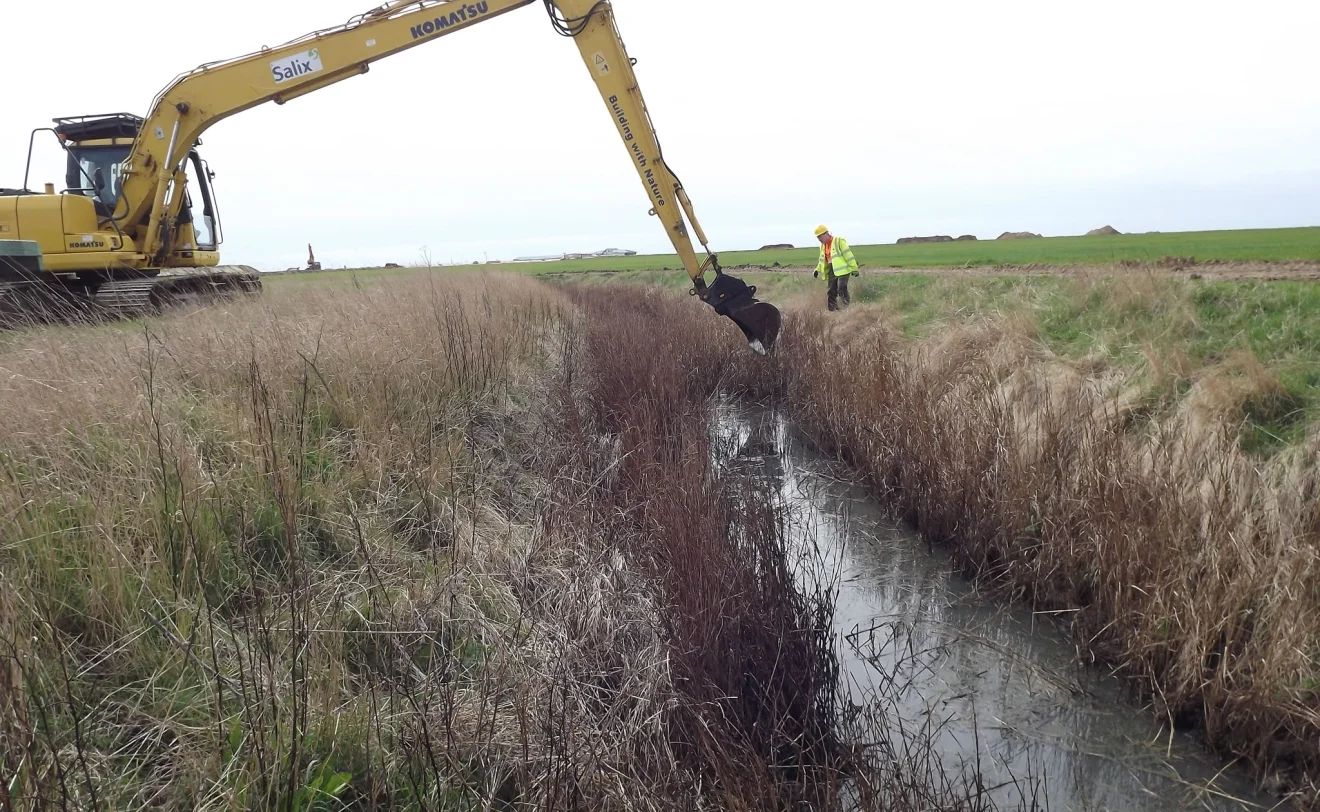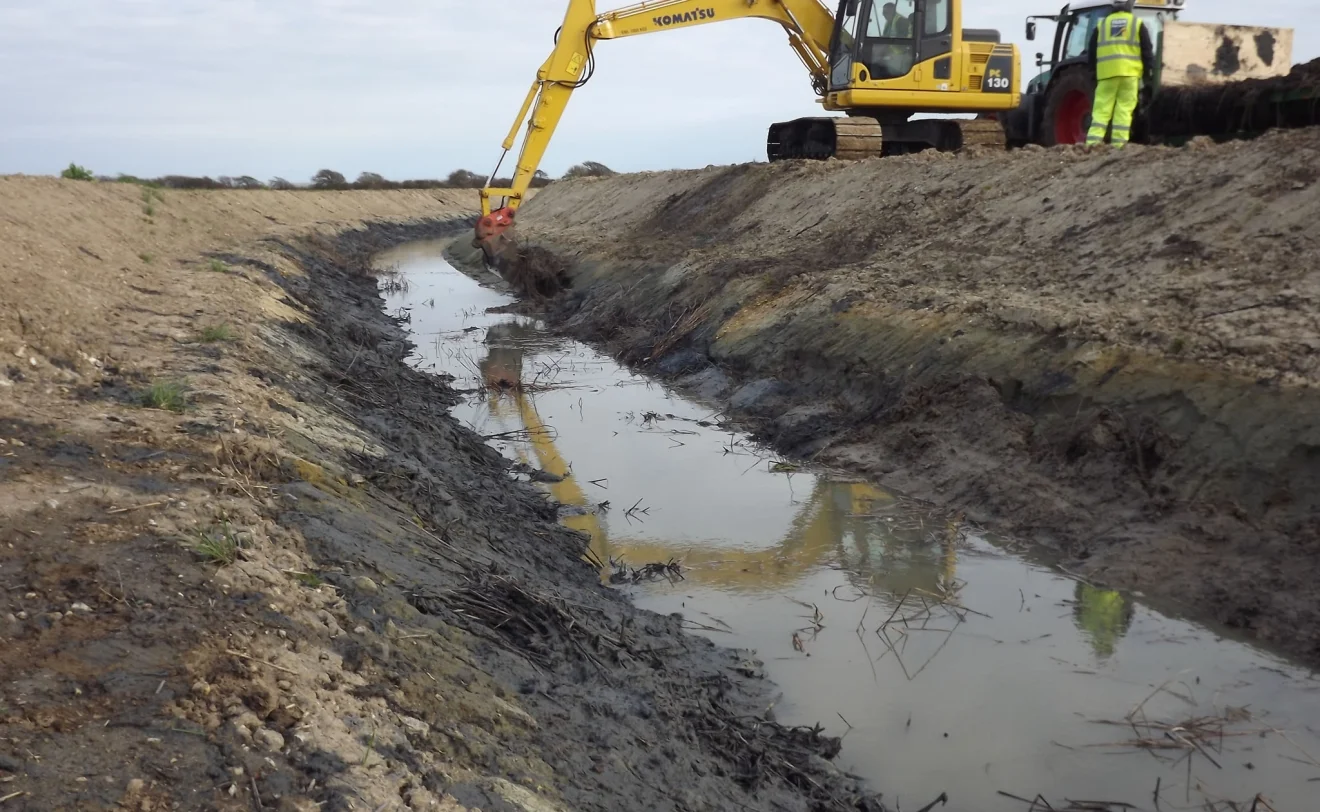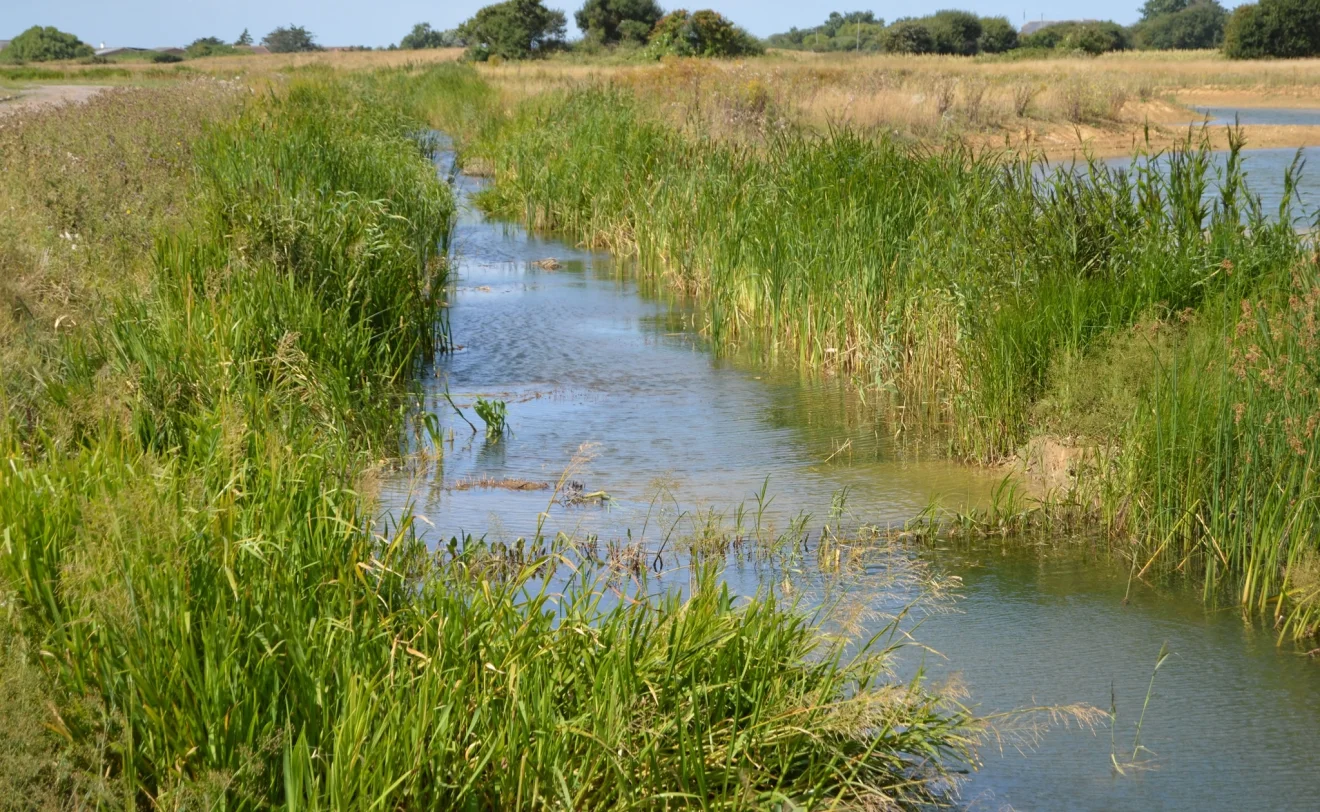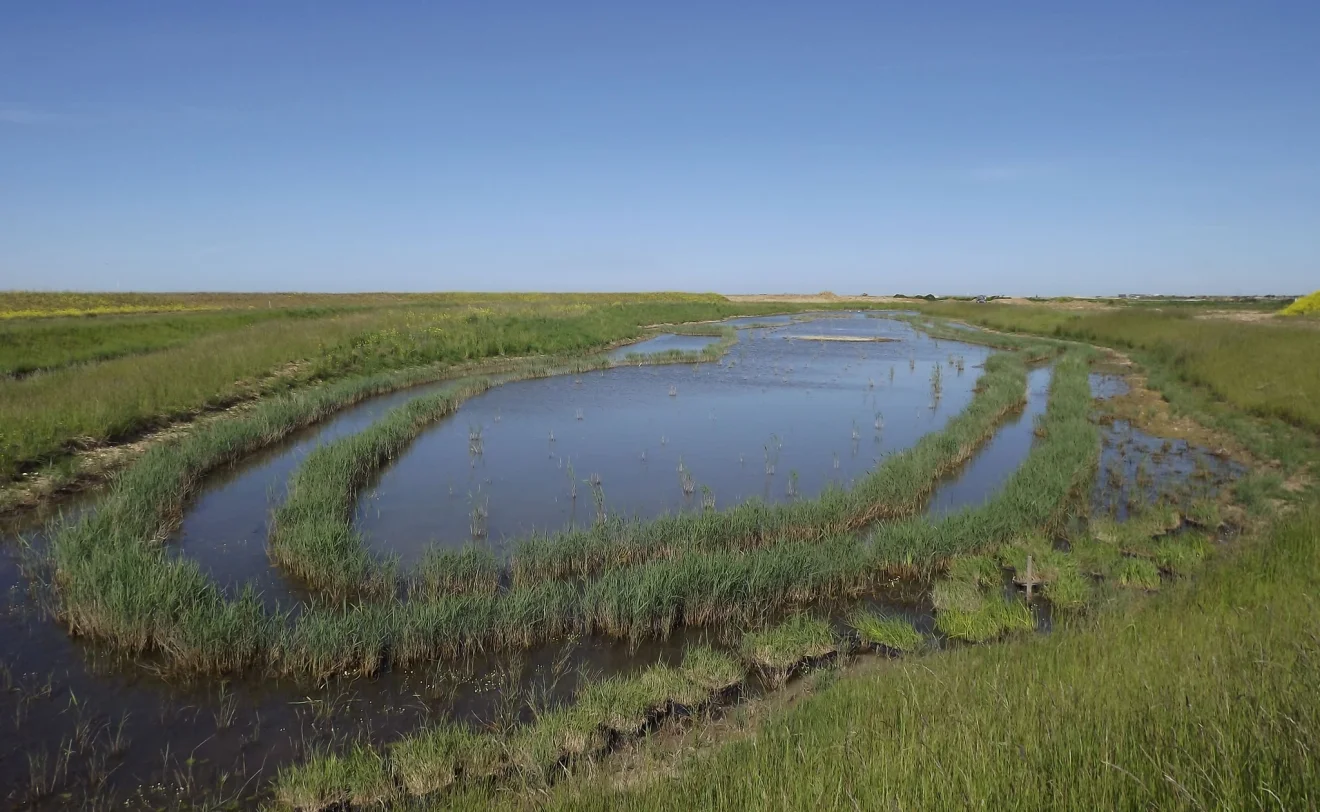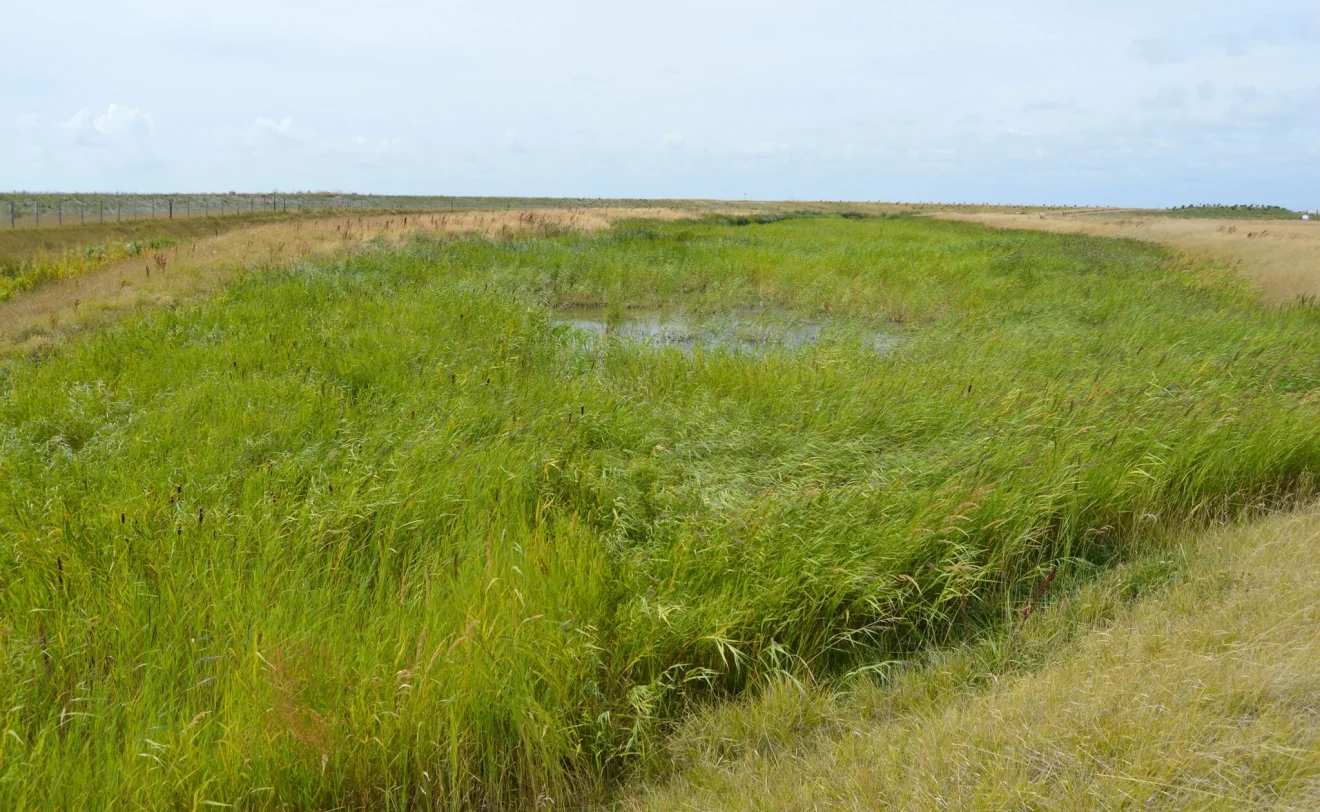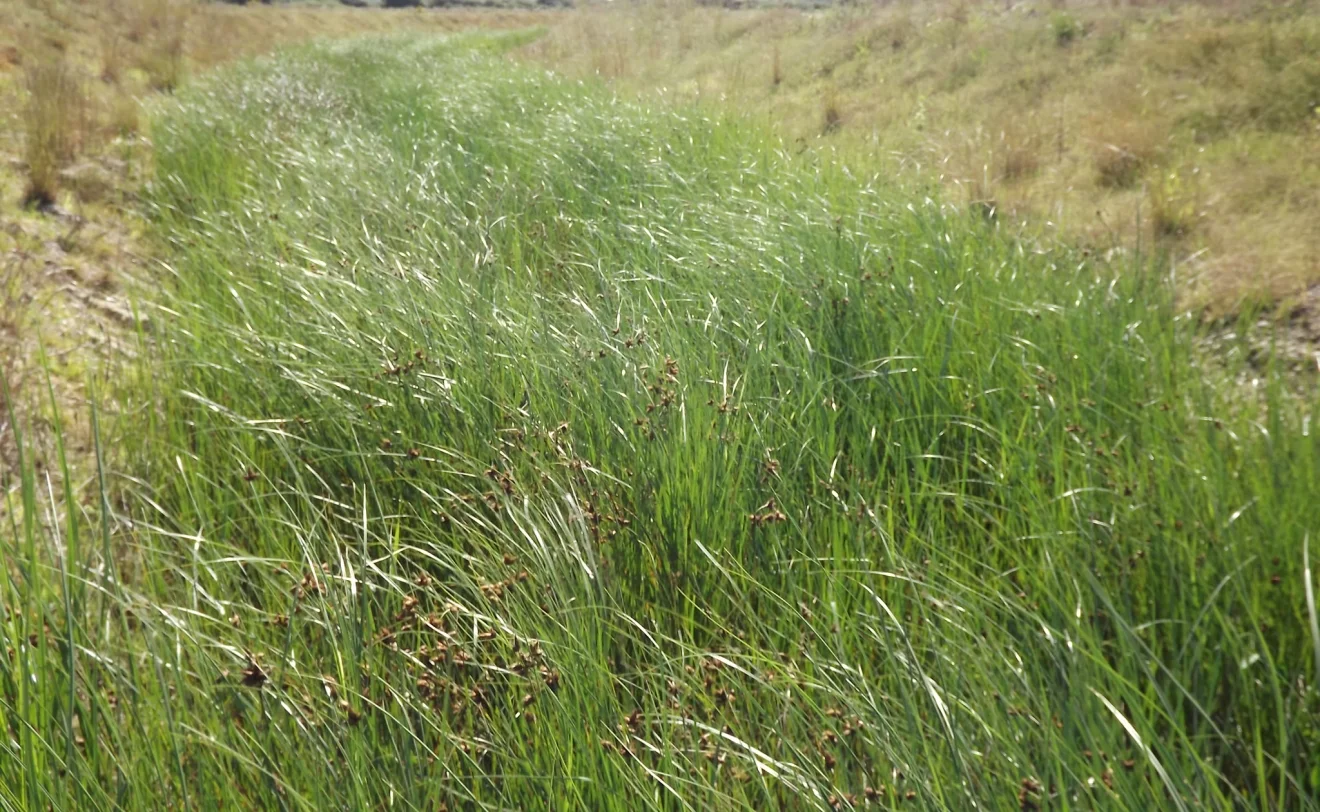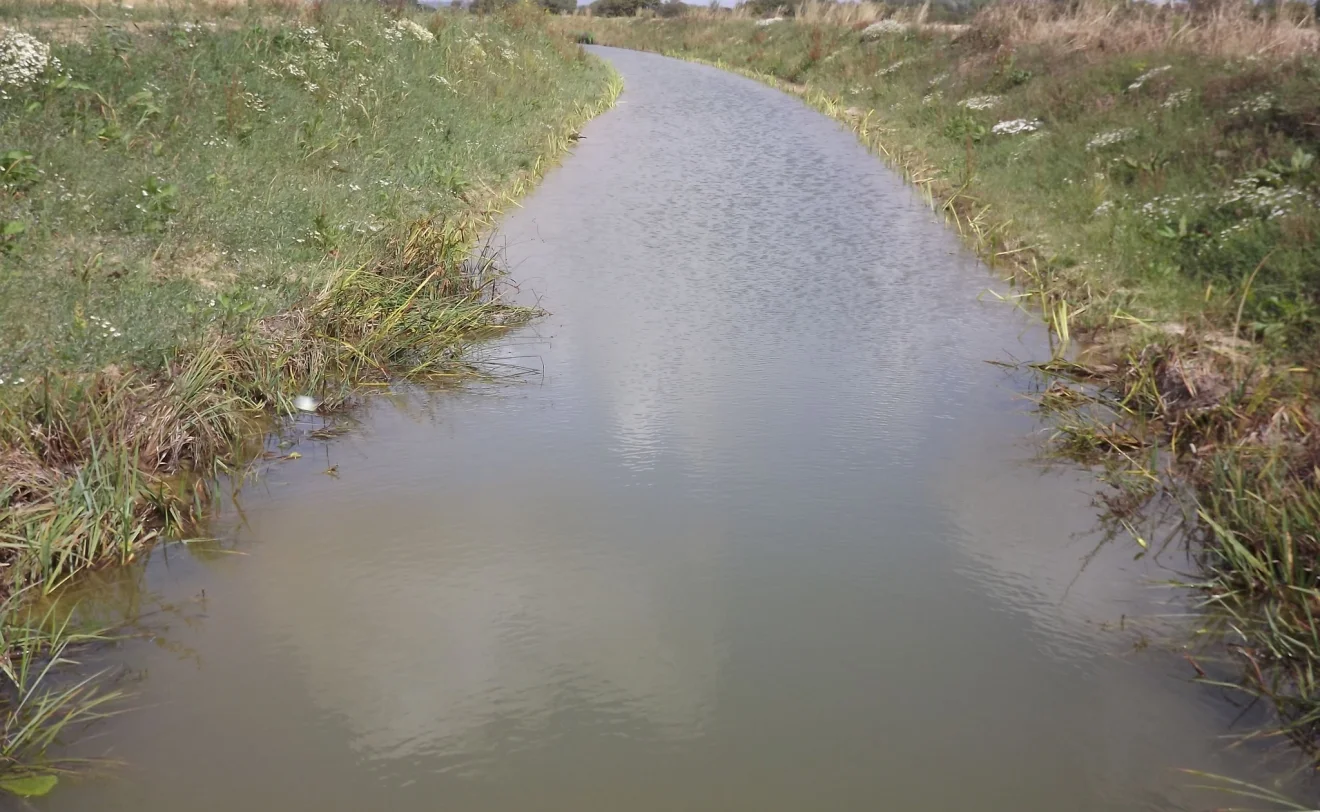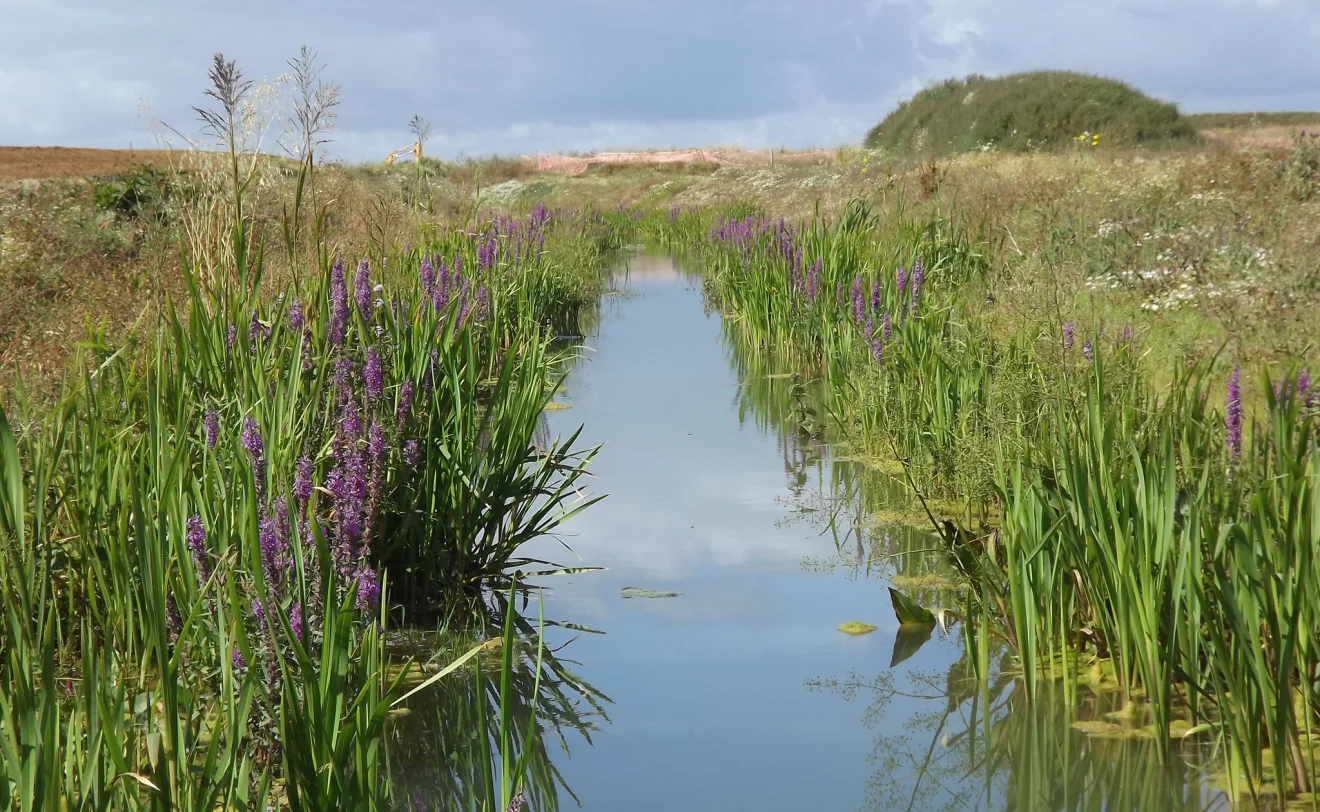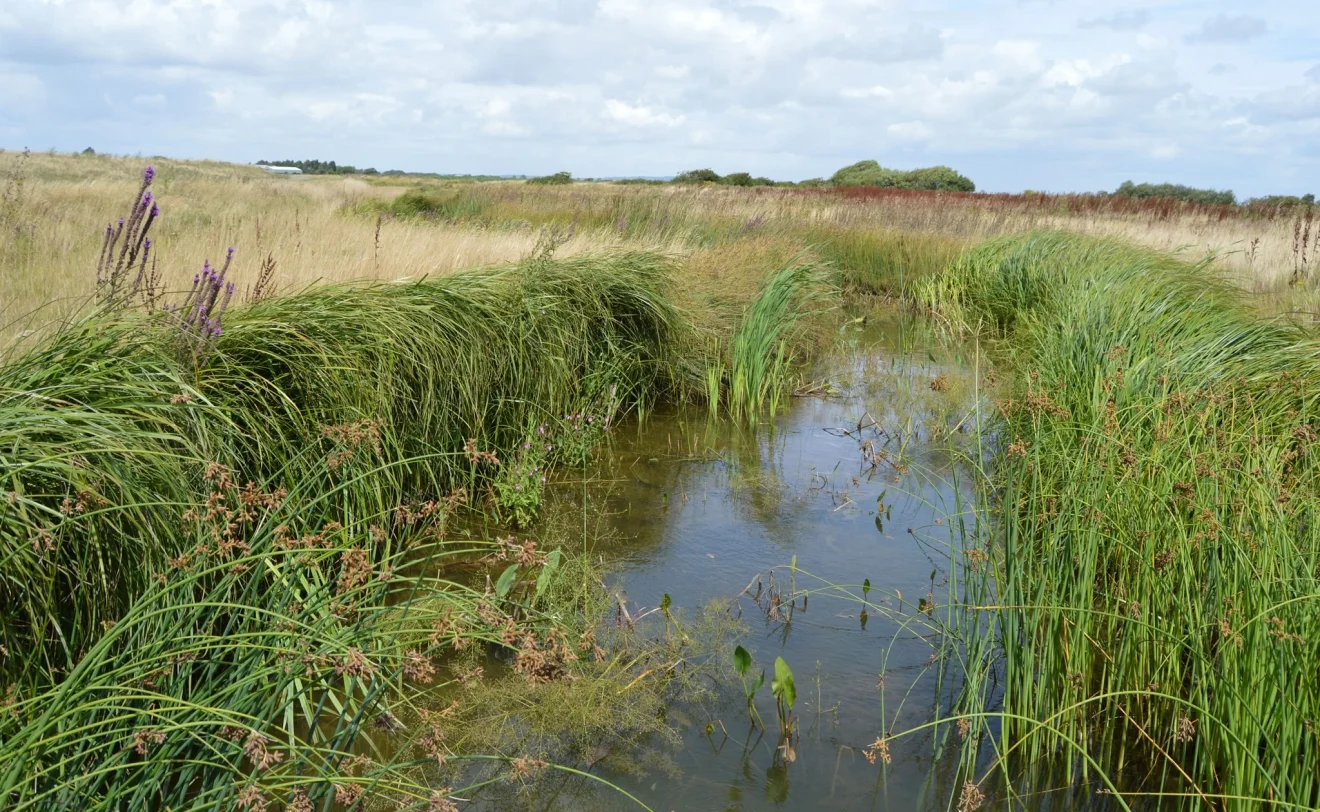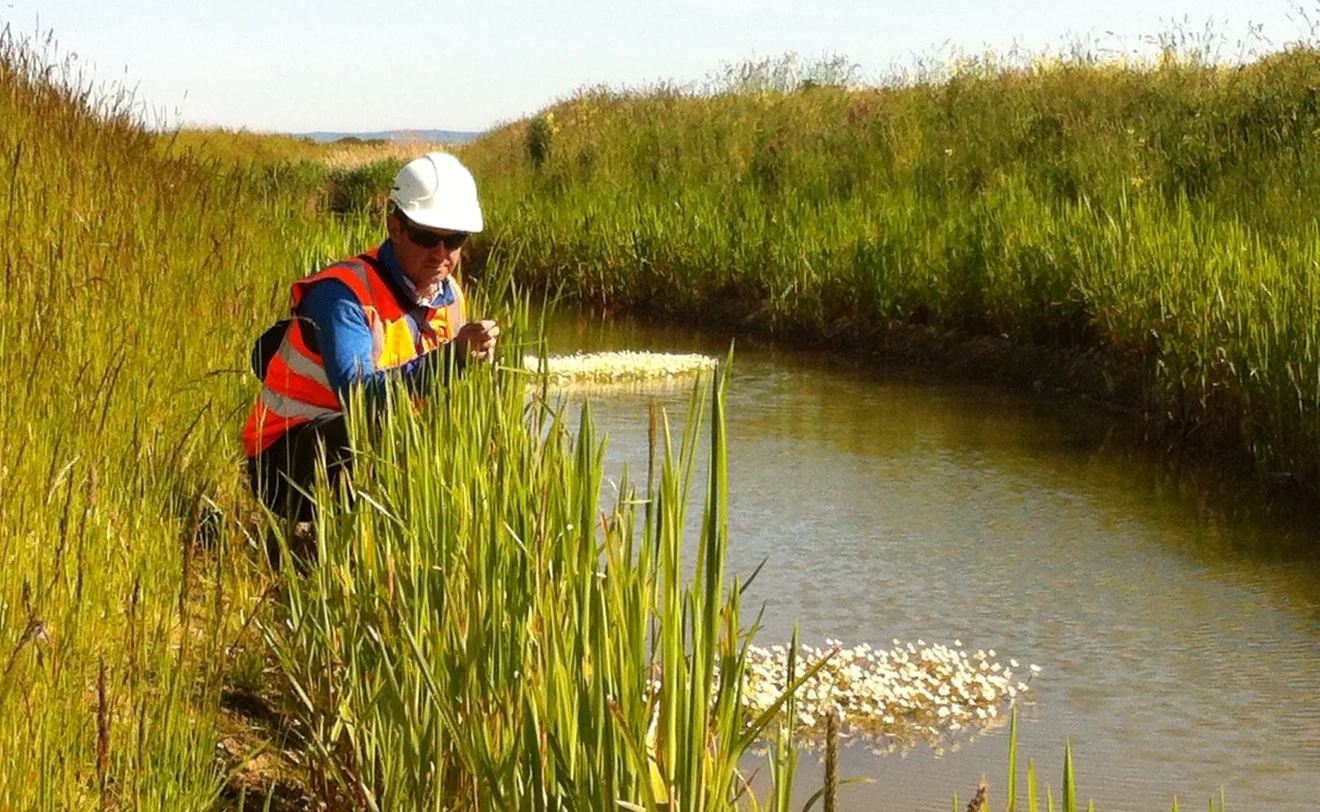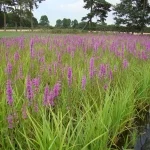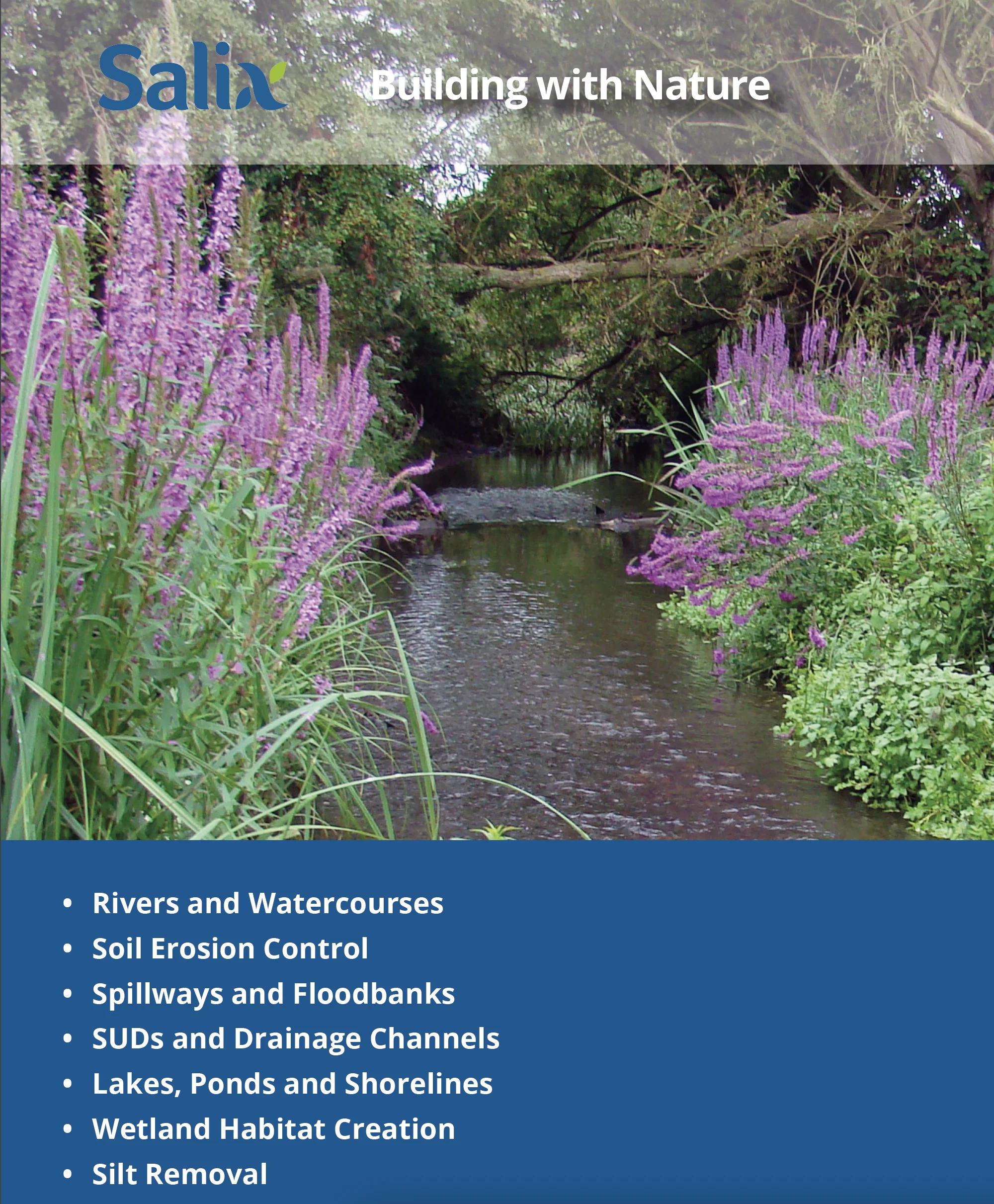Medmerry is one of the stretches of coastline most at risk of flooding in southern England. The overall scheme involves building major new sea defences inland and allowing a new intertidal area to form...
Medmerry is one of the stretches of coastline most at risk of flooding in southern England. The overall scheme involves building major new sea defences inland and allowing a new intertidal area to form between Selsey and Bracklesham in West Sussex. Salix, working as a specialist sub contractor and supplier have created important new wildlife habitat for the endangered water vole.
Salix were asked to review the establishment methods for the wetland features creation. We based our recommendations on the following criteria:
- Establish vegetation to allow suitable water vole habitat by March 2013 (one growing season only!)
- Establish the maximum amount of habitat within a fixed budget
- Focus techniques within key/priority areas
- Limited donor sites of aquatic macrophytes for translocation with a very short time frame. Therefore pre-established Coir Pallets and high density wetland plug planting was required to make up the shortfall.

Vegetation from the centre of existing water vole habitat ditches was carefully removed under close supervision. The vegetation was translocated into the newly created ditch network at average water level.
Each particular plant species or community of vegetation was dug at different depths and translocated and placed in the new channel differently to reflect the species specific needs.
The establishment of the translocated material has been a great success, with over 3km of new bank habitat coming to maturity in only a four month period.
To supplement the translocation, over 3km of habitat has been established using mature pre-established Coir Pallets. The pallets were planted with Salix’s Water Vole Habitat species mix and installed throughout April this year.
After four months the plants in the Coir Pallets had reached maturity and started to spread out of the pallets into the soil behind.
A report was commissioned with Brighton University which involved monitoring of water voles and their adaptation to their new habitat.
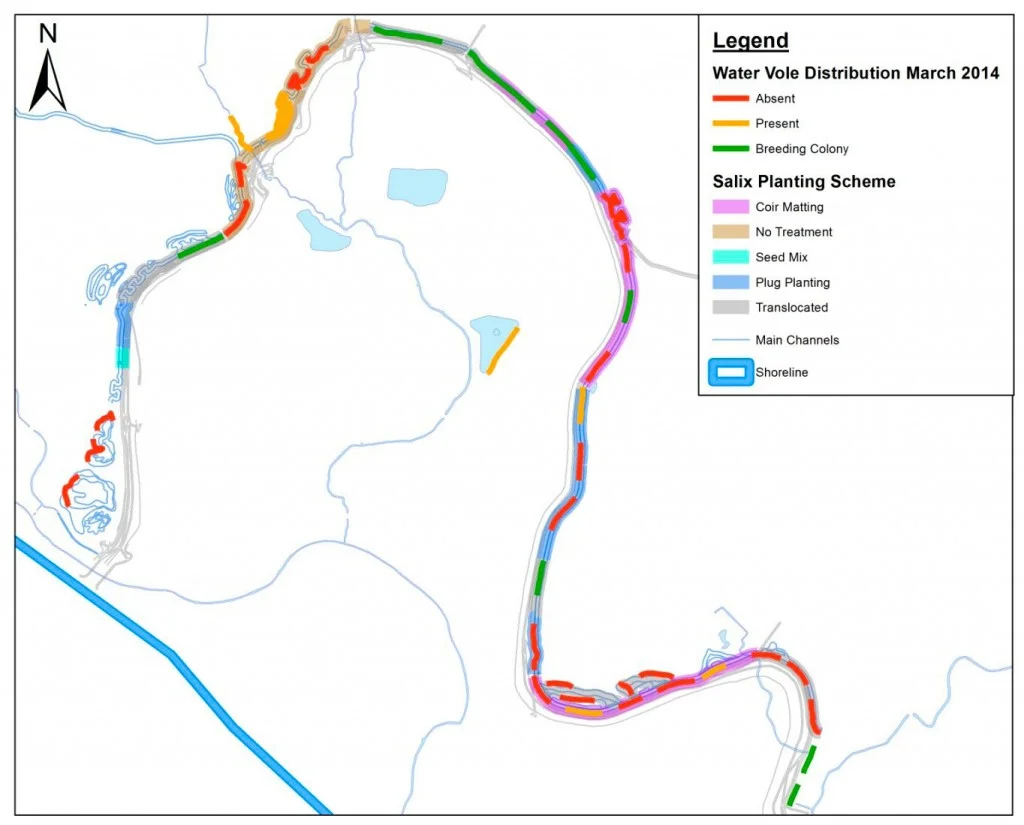
The report, written by Rowenna Baker, concluded that areas with pre-established Coir Pallets provided excellent and immediate cover for water voles:
Areas established from translocated vegetation and coir matting provided the most amount of cover at this time and was where the majority of water vole signs occurred.
By September 2014, the number of signs and distribution of water voles had increased in response to the increased cover provided by establishing vegetation.
The distribution of water voles was significantly influenced by the planting scheme with activity and breeding colonies favouring the translocated and coir matted areas.

The report also concluded:
The coir matting provided the highest species richness, as determined by the vegetation surveys carried out in Autumn 2014, and has been consistently favoured by water voles.
As the plug planting establishes to provide greater cover, this has become increasingly favoured by water voles.
Many thanks to the report’s author, Rowenna Baker, The Environment Agency and Brighton University for allowing us to use their data and distribution maps.
Medmerry is being showcased at the International Union for Conservation of Nature (IUCN) World Conservation Congress, which is taking place in Hawaii in Sep 2016, a stamp of approval for natural flood management.
